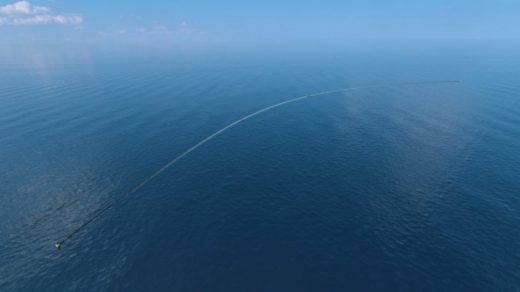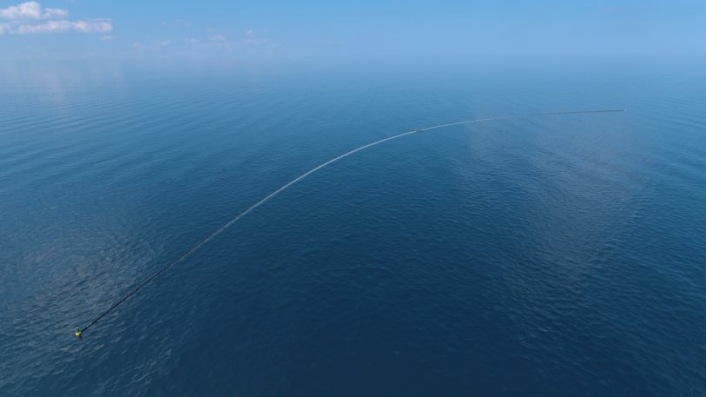Boy Genius Boyan Slat’s Giant Ocean Cleanup Machine Is Real
When the oceanographer Charles Moore first discovered the Great Pacific Garbage Patch–an area of the ocean where currents concentrate the plastic we throw into the ocean–in 1997, he was shocked by its magnitude and persistence. “It seemed unbelievable, but I never found a clear spot,” he wrote later in Natural History magazine. “In the week it took to cross the subtropical high, no matter what time of day I looked, plastic debris was floating everywhere: bottles, bottle caps, wrappers, fragments.” In the years since the plastic buildup has only worsened. In a recent article in the New York Times, Moore reported that the Patch, through a process of accretion, now contains “solid areas you could walk on.”
It’s, therefore, good news that a massive cleansing project is proceeding ahead of schedule. Boyan Slat, who first set out a vision of his Ocean Cleanup machine in a TED talk six years ago when he was just 17, today announced that he’ll begin hauling trash from the Patch in 2018. The news is vindication for the project, which has received plenty of TED-sized hype and millions of dollars in philanthropy, but which has also been criticized by some campaigners who say it’s sucked up resources and raised expectations to impossible-to-achieve levels.

Due to what he calls a “technological breakthrough,” Slat hopes the project will be cheaper and more effective than previously anticipated. Instead of removing 42% of the trash in the garbage patch over 10 years at a cost of $320 million, he now expects to collect 50% of total trash in just five years, and at a cost “significantly less” than $320 million.
Slat’s design involves massive booms that collect trash using the Pacific’s own currents. The booms act as an “artificial coastline” passively catching and then concentrating debris into the center, from where it’s offloaded to a boat that sweeps by periodically (probably once a month). The “breakthrough” is that Slat no longer thinks that the booms need to be grounded to the ocean floor. Rather, he plans to suspend the booms with large anchors that float in deeper water, so the booms shift around the ocean, though still more slowly than the trash at the surface. Research showed that tidal speeds are more than four times slower at depths a few hundred feet below and that the difference is sufficient to still get the accumulating effects that Slat envisaged with a fixed boom.
The anchors will be suspended on lines in four segments, each 40 feet tall and 13 feet wide. They have a total surface area of 328 feet square, enough to provide plenty of drag to slow down the booms as plastic trash circulates around the “gyre”–a swirling trash vortex within the Garbage Patch.
Using a floating system has advantages in both cost and time, Slat says. The team no longer has to dig foundations at up to 2.8 miles deep and it can skip a prototyping stage. “We thought ‘wait a minute, instead of fixing it to the seabed, we can fix it in that deep-water layer,” Slat says in an interview from his Delft base, in the Netherlands. “The massive sea anchor slows down the system so it travels slower than at the surface, and the plastic still accumulates along the barrier and toward the center the system.”
The Ocean Cleanup Foundation, now numbering 65 people, will begin testing a 0.6-mile prototype later this year, before full deployment in 2018. It recently announced it has raised more than $30 million for the effort, including $21.7 million since last November. Most of that has come from Silicon Valley apparently, including from Marc and Lynne Benioff, of Salesforce fame, and PayPal cofounder Peter Thiel (who is famous and infamous for many reasons). Other donations have come from the Julius Baer Foundation, Dutch multinational Royal DSM, and an anonymous benefactor.

As he was developing designs for the devices (our previous stories here, here and here), Slat had imagined one massive device, perhaps extending as much as 60 miles. He now envisages up to 50 devices of 0.6 miles each. That constellation is more scalable and less risky, he says; if one device breaks down, there will still be 49 others operating at any time. Plus, they can be funded as cash flow allows, rather than all at once. A previous prototype deployed in the North Sea, off the rough Dutch coast, showed how a fixed boom could be beaten up quickly (eventually the prototype, joyfully known as “Boomy McBoomface.” had to be taken out of the water). The new boom rides the waves rather than attempt to withstand them, and it’s stiff and solid, not hollow and pumped with air.

Slat’s calculation for the cleanup rate is a very big estimate. But his foundation, through several expeditions by boat and by plane, has mapped the Patch’s trash extensively. And he claims to have done a lot of mathematic modeling to understand how the marine devices and the trash will interact in the wild. Slat, who’s still only 22, expects to collect tens of thousands of tons of debris a year, and for each device to need emptying (by a “garbage truck of the oceans”) every month or so. It’s not known how much trash is in the Patch, though it’s probably of the order of hundreds of thousands of tons. Scientists have estimated there are five trillion pieces of plastic in the world’s oceans, weighing more than 250,000 tons in total.
Slat and I spoke over Skype, and toward the end of our chat he holds up some sunglasses made from ocean plastic. The long-term plan is to recycle all the plastic collected into items like car bumpers, chairs, and eyewear, and for companies to sponsor each boom with prominent logos. That will help defray the cost, he says. It’s a fail-proof, wonderfully imaginative, scheme. We’ll just have to hope it’s as seaworthy as Slat imagines.
A system of trash-collecting booms will launch in 2018, and–the 22-year-old inventor claims–will collect half the plastic trash in the Pacific Garbage Patch in five years.
When the oceanographer Charles Moore first discovered the Great Pacific Garbage Patch–an area of the ocean where currents concentrate the plastic we throw into the ocean–in 1997, he was shocked by its magnitude and persistence. “It seemed unbelievable, but I never found a clear spot,” he wrote later in Natural History magazine. “In the week it took to cross the subtropical high, no matter what time of day I looked, plastic debris was floating everywhere: bottles, bottle caps, wrappers, fragments.” In the years since the plastic buildup has only worsened. In a recent article in the New York Times, Moore reported that the Patch, through a process of accretion, now contains “solid areas you could walk on.”

Boyan Slat, who first set out a vision of his Ocean Cleanup machine in a TED talk six years ago when he was just 17. [Image: courtesy The Ocean Cleanup Foundation]
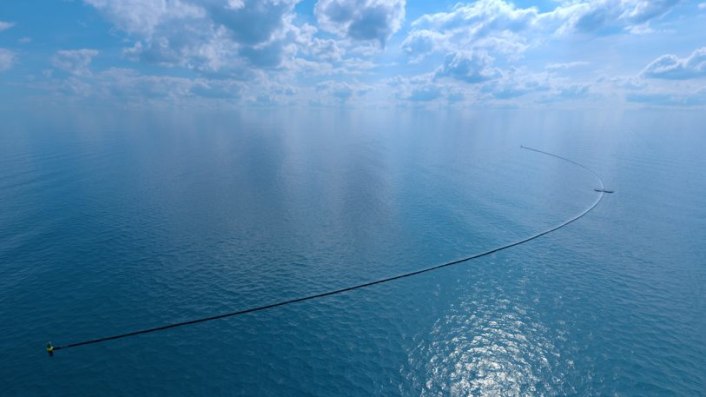
Today he announced that he’ll begin hauling trash from the Patch in 2018. [Image: courtesy The Ocean Cleanup Foundation]

Due to what he calls a ‘technological breakthrough’ Slat hopes the project will be cheaper and more effective than previously anticipated. [Image: courtesy The Ocean Cleanup Foundation]
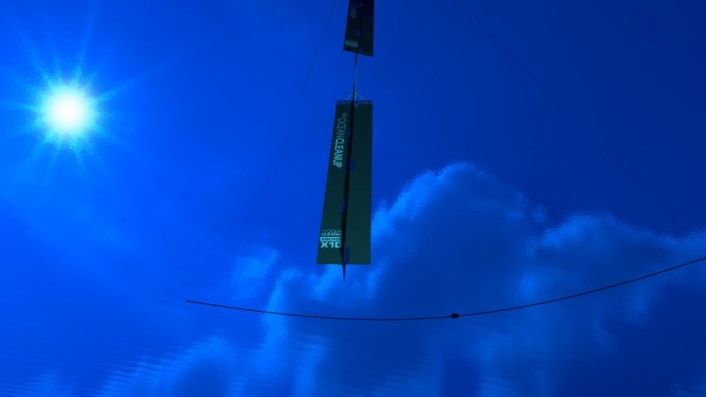
Slat’s design involves massive booms that collect trash using the Pacific’s own currents. [Image: courtesy The Ocean Cleanup Foundation]
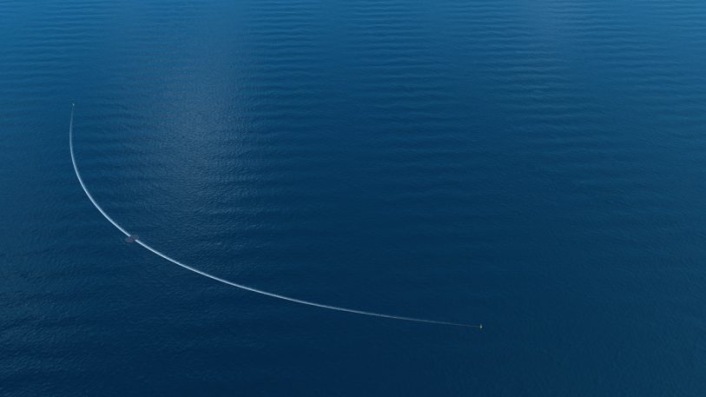
The booms act as an “artificial coastline” passively catching and then concentrating debris into the center, from where it’s offloaded to a boat. [Image: courtesy The Ocean Cleanup Foundation]
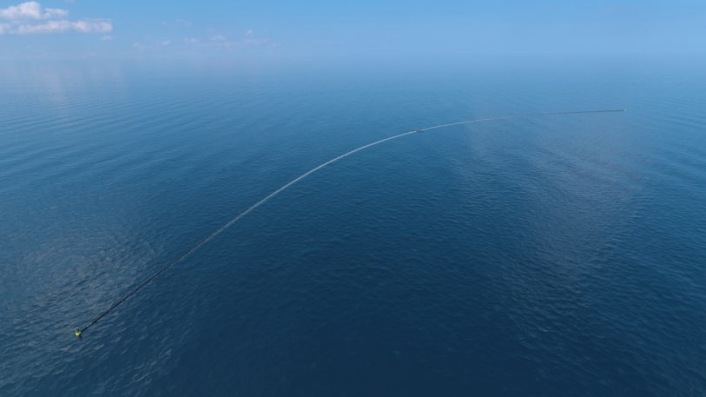
The “breakthrough” is that Slat no longer thinks that the booms need to be grounded to the ocean floor. Rather, he plans to suspend the booms with large anchors that float in deeper water. [Image: courtesy The Ocean Cleanup Foundation]
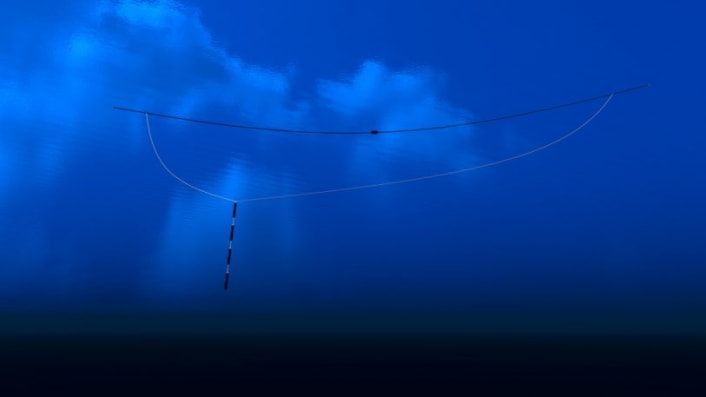
Research showed that tidal speeds are more than four times slower at depths a few hundred feet below, and that the difference is sufficient to still get the accumulating effects that Slat envisaged with a fixed boom. [Image: courtesy The Ocean Cleanup Foundation]
Fast Company , Read Full Story
(115)

